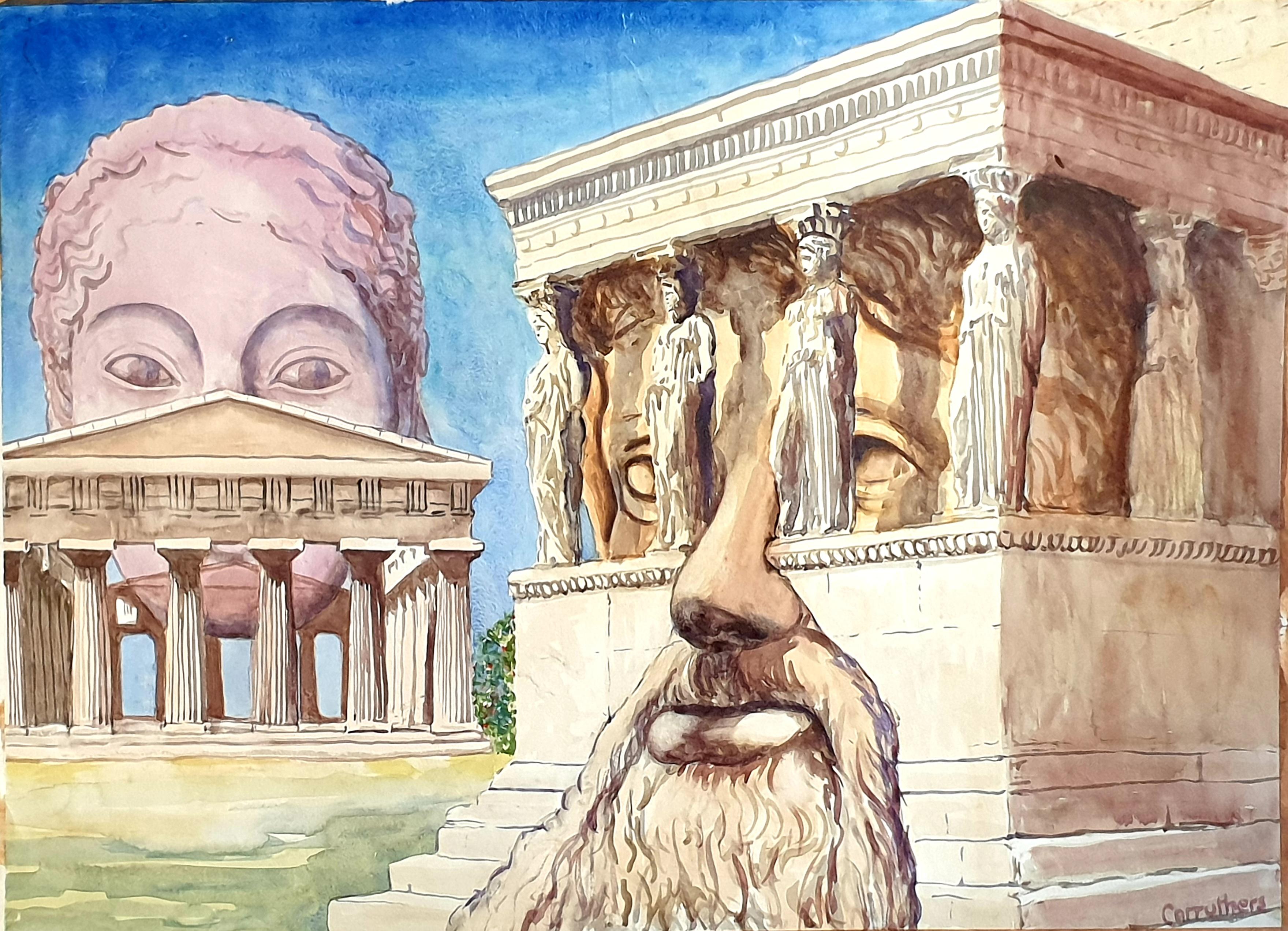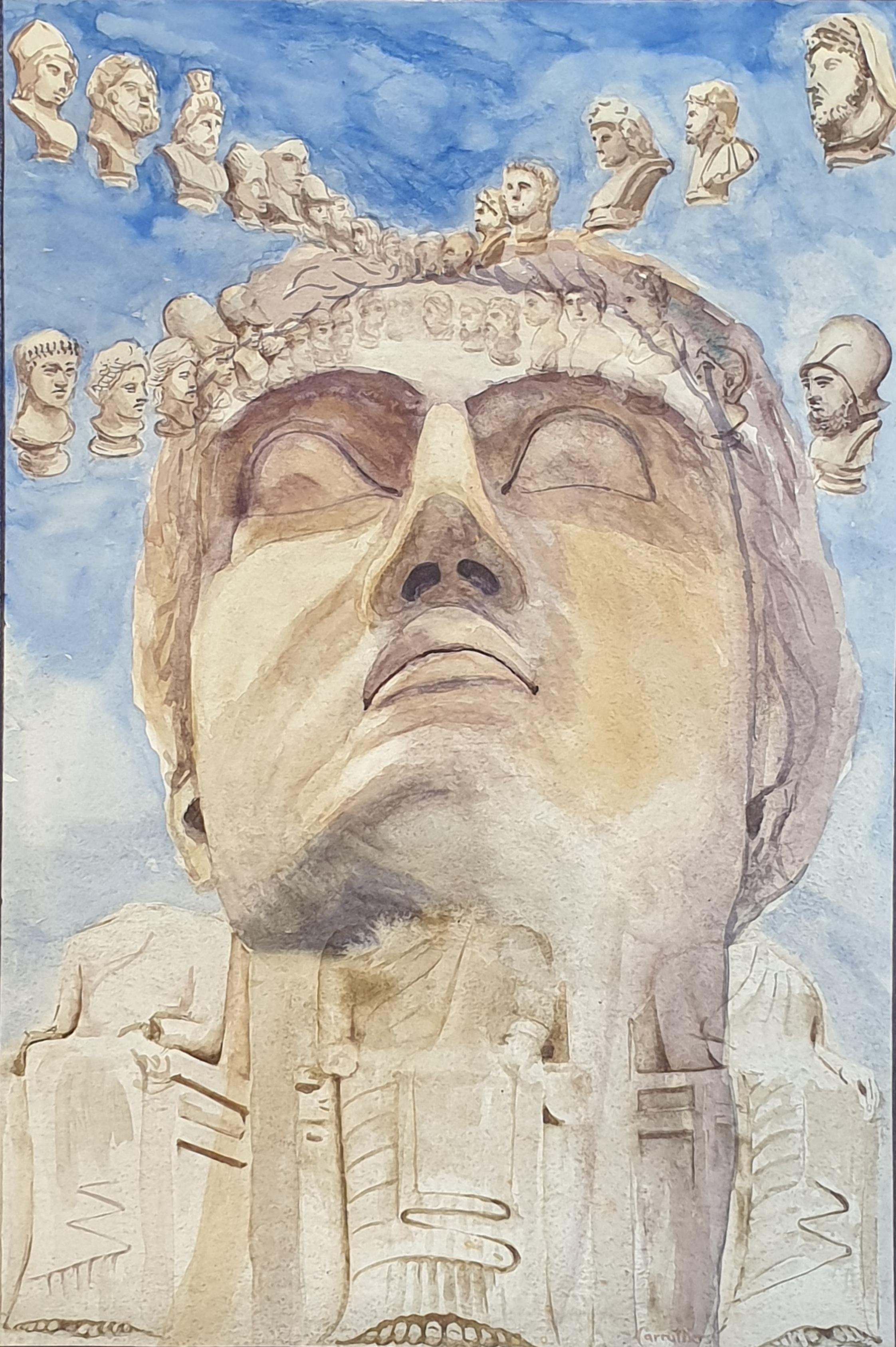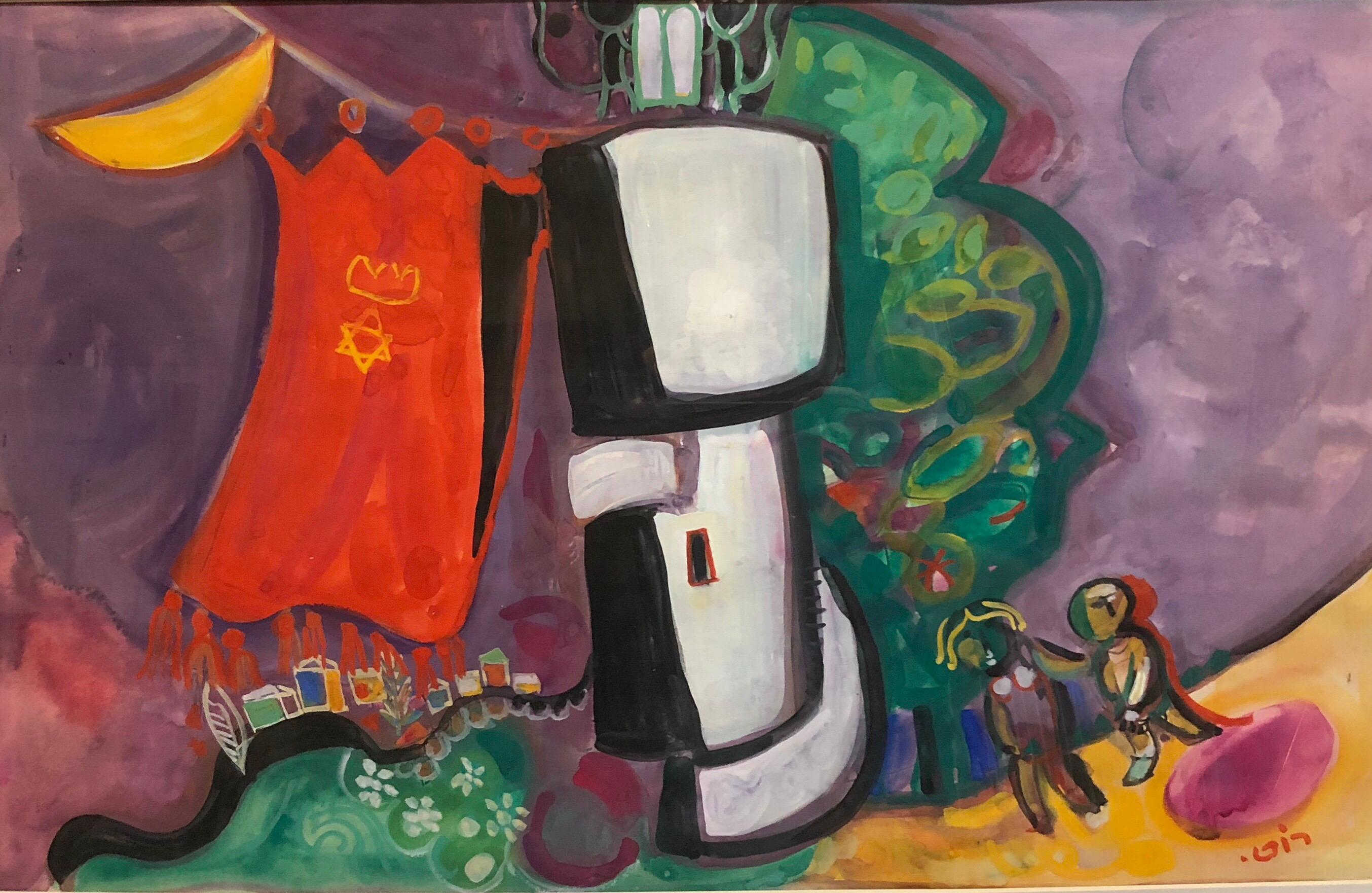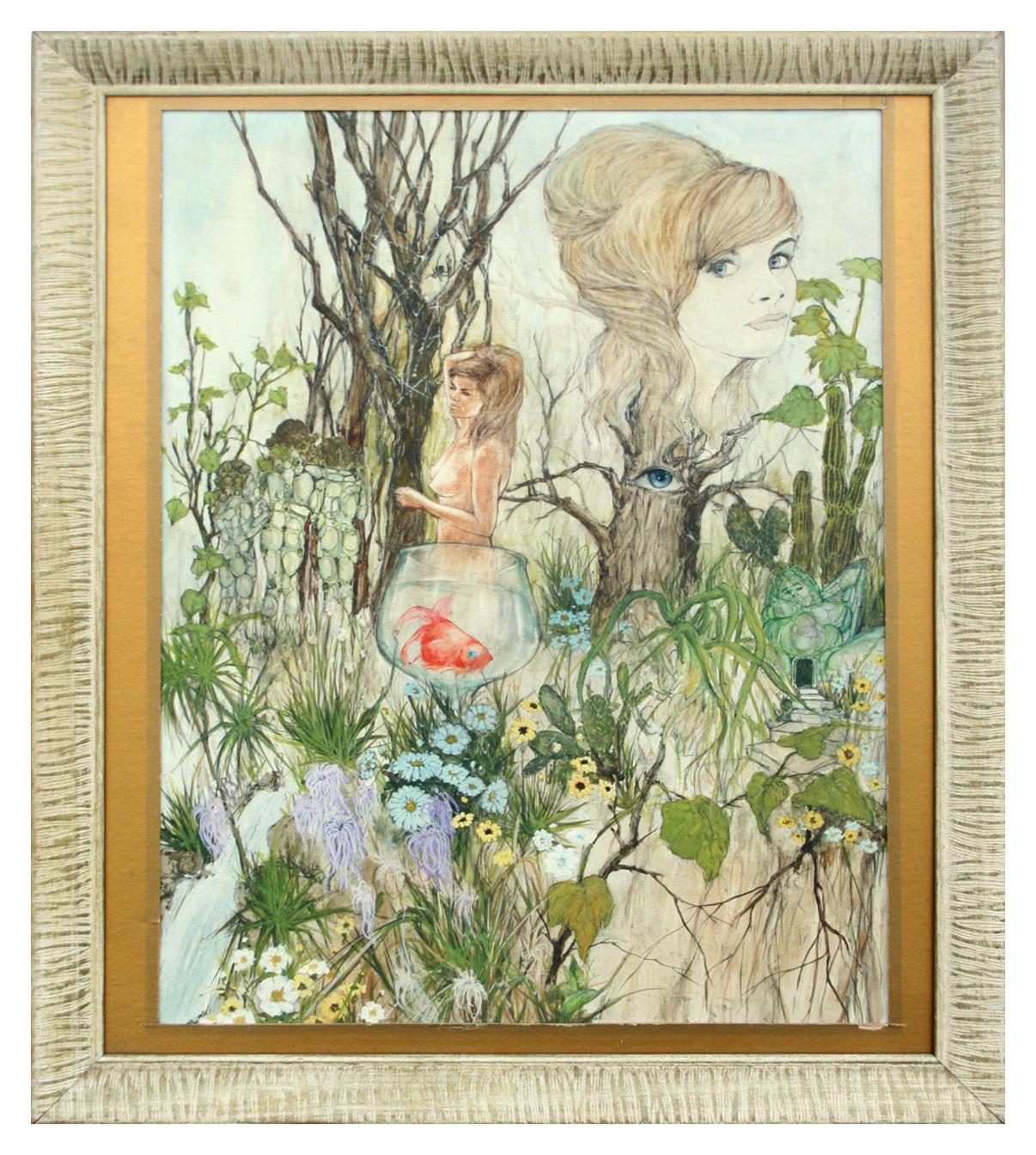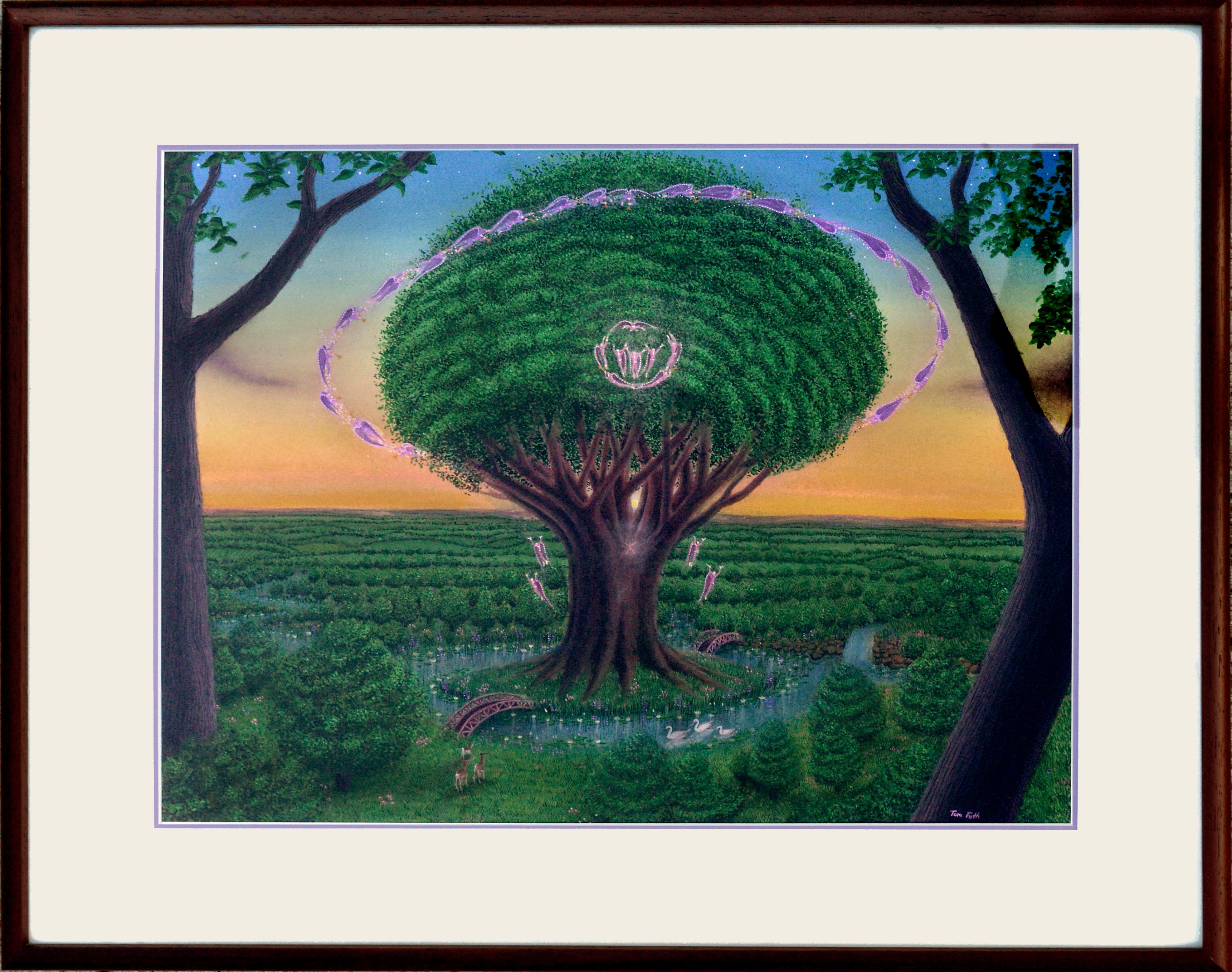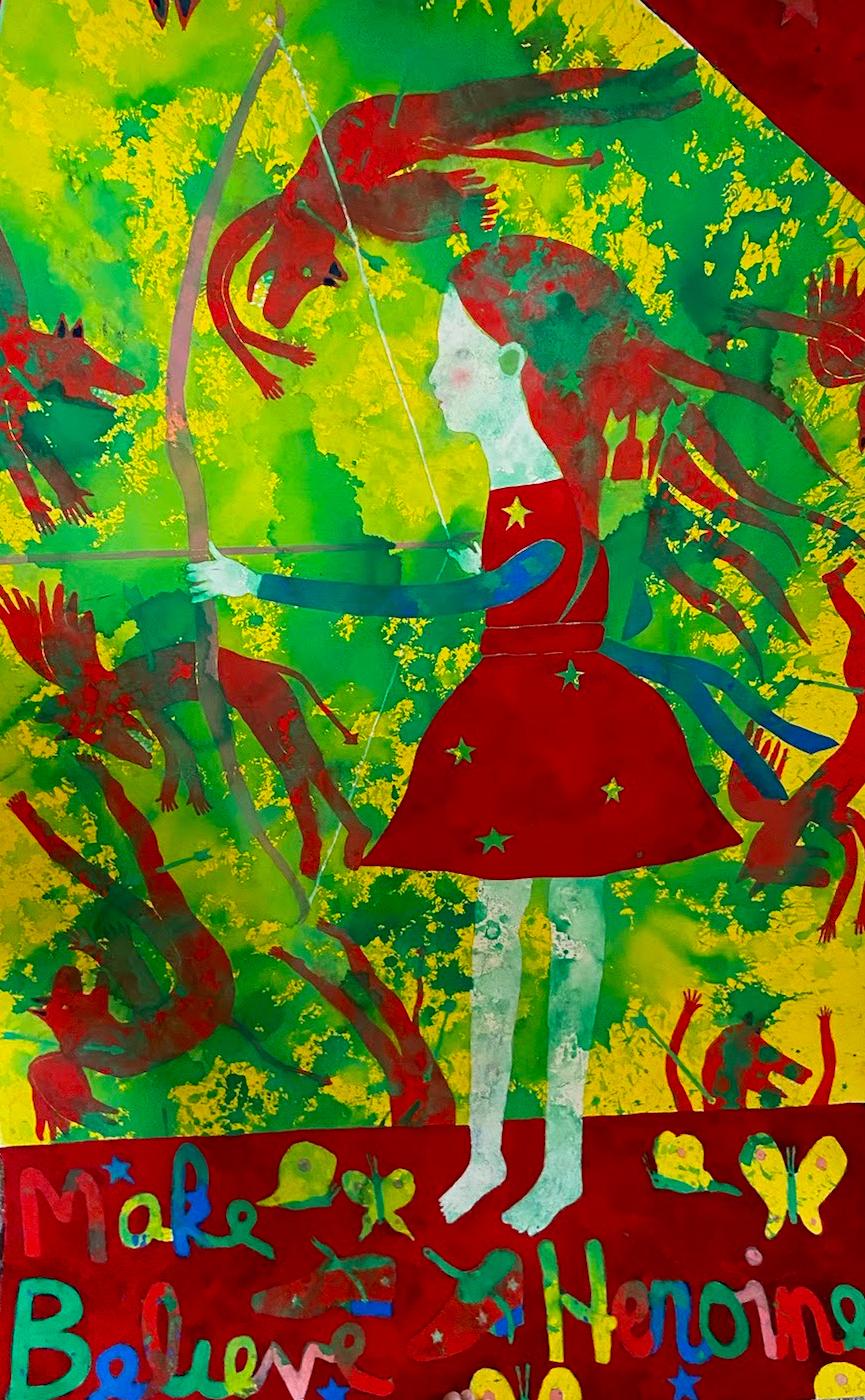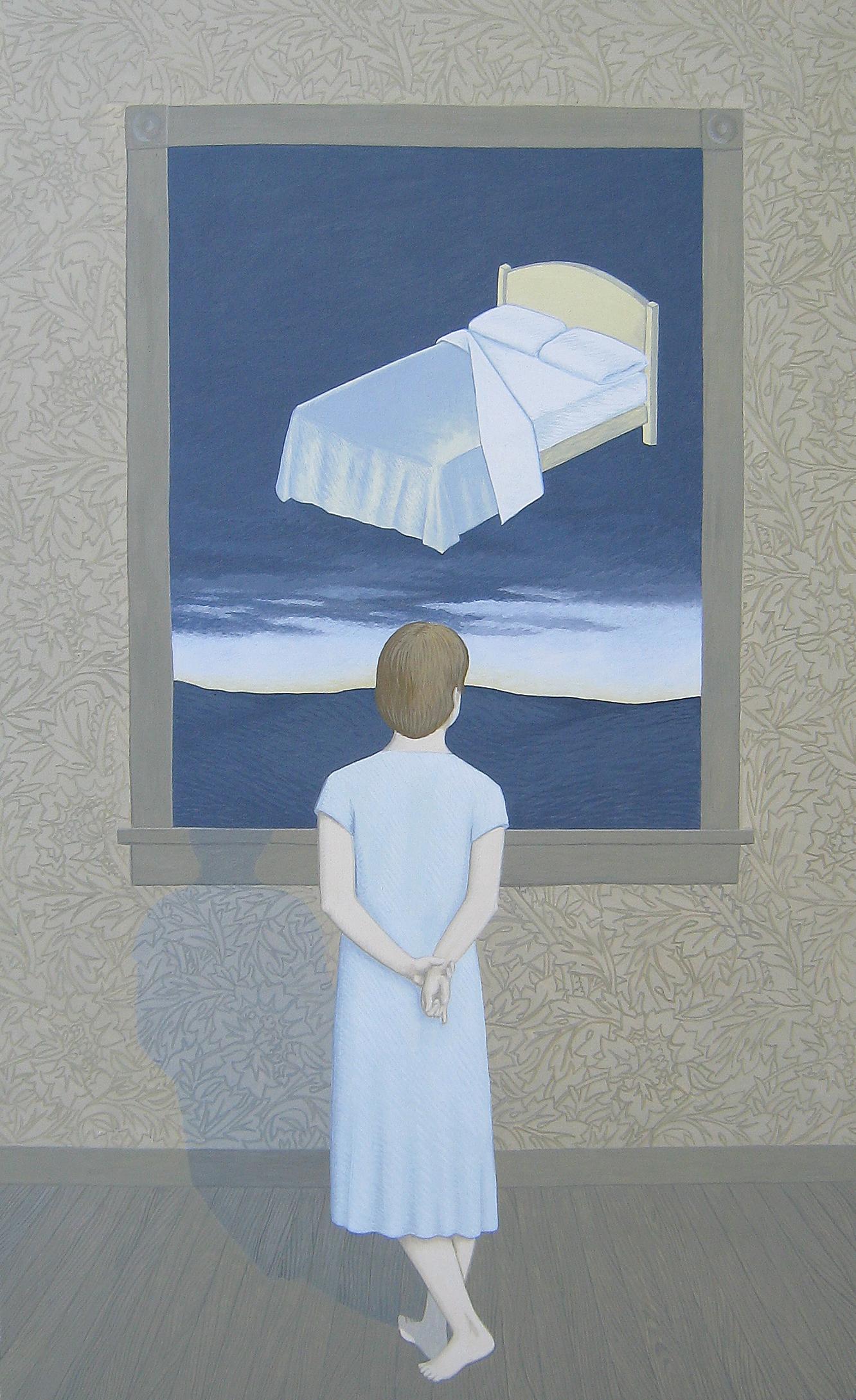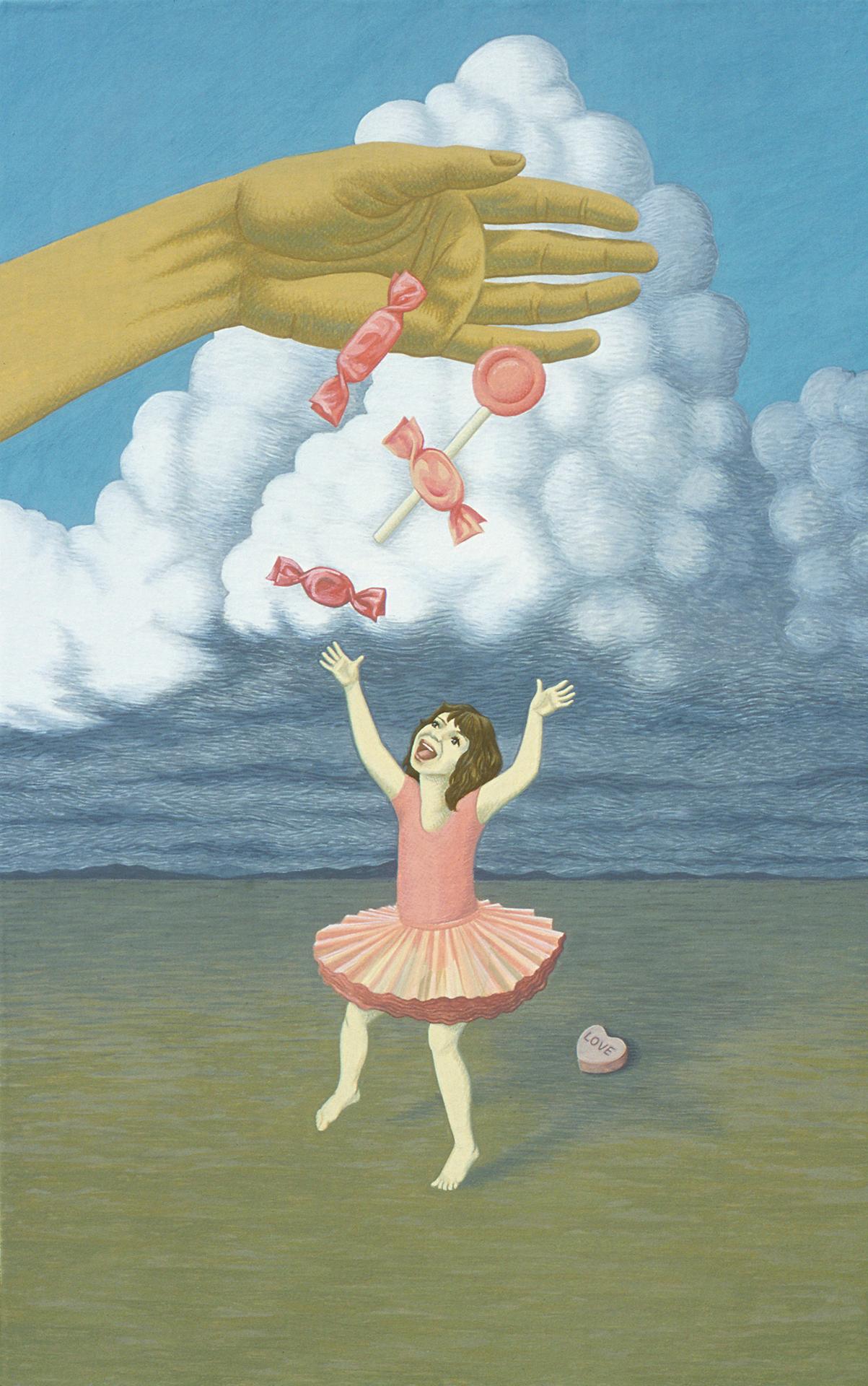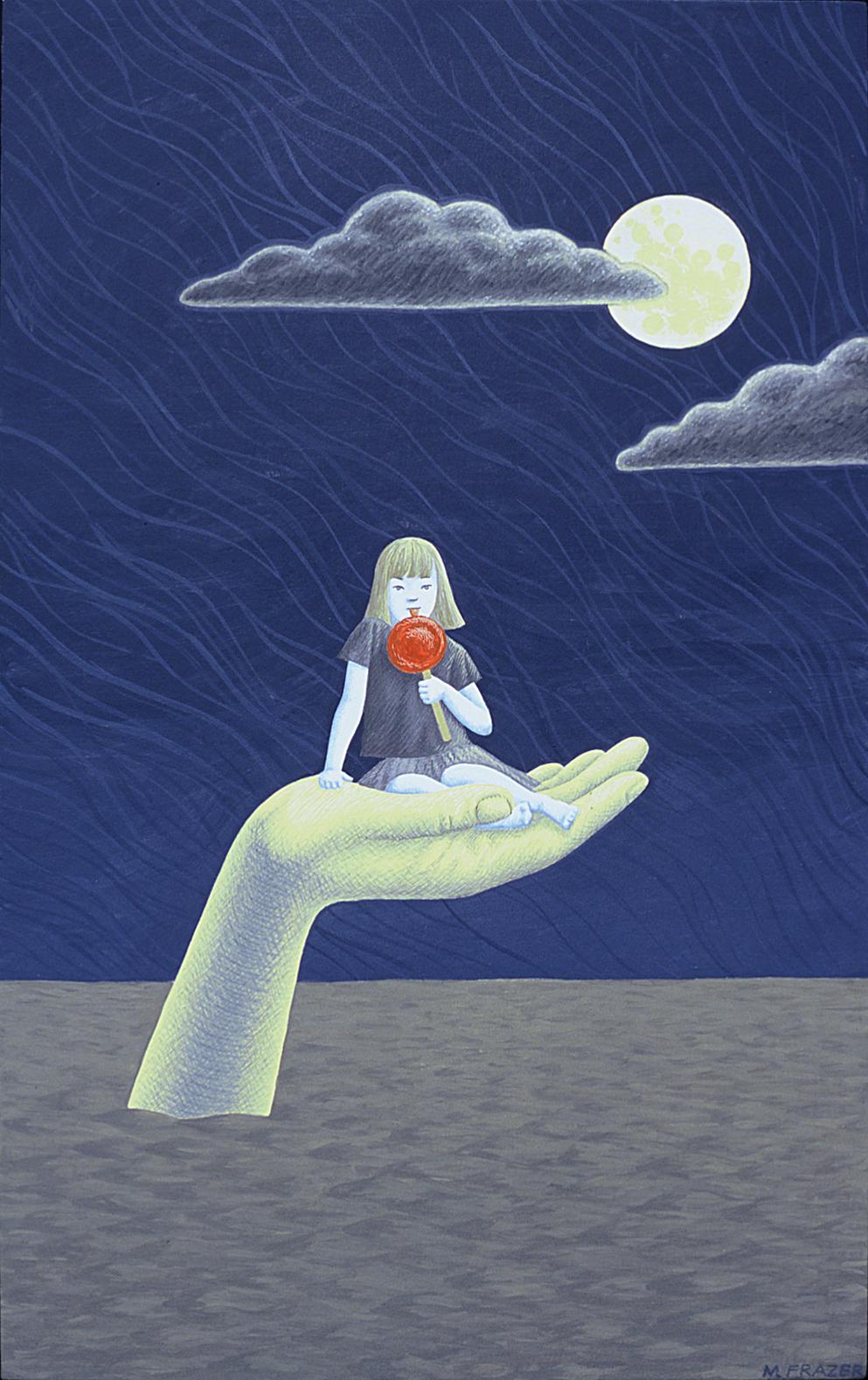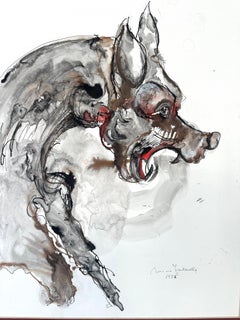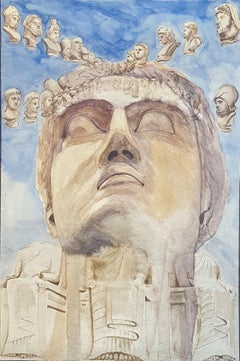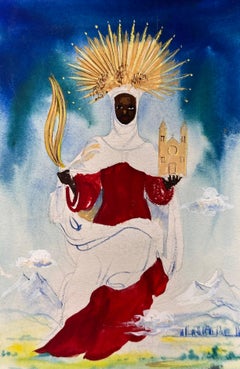
Black Goddess
View Similar Items
Want more images or videos?
Request additional images or videos from the seller
1 of 13
Ruth RayBlack Goddess ca. 1960
ca. 1960
About the Item
- Creator:Ruth Ray (1919 - 1977, American)
- Creation Year:ca. 1960
- Dimensions:Height: 17.5 in (44.45 cm)Width: 15.5 in (39.37 cm)Depth: 1 in (2.54 cm)
- Medium:
- Movement & Style:
- Period:
- Condition:
- Gallery Location:Wilton Manors, FL
- Reference Number:1stDibs: LU245211937462
About the Seller
4.9
Vetted Seller
These experienced sellers undergo a comprehensive evaluation by our team of in-house experts.
Established in 2007
1stDibs seller since 2015
322 sales on 1stDibs
Typical response time: 5 hours
More From This SellerView All
- Surrealist HoundLocated in Wilton Manors, FLAmazing surrealist painting by Italian artist Nuccio Fontanella (1936-2005). Ink and watercolor on cold pressed illustration board. Image measures 13 x 18 inches; 20 x 25 inches fram...Category
1980s Surrealist Animal Paintings
MaterialsInk, Illustration Board, Watercolor
- Art Deco Spanish Woman Fashion IllustrationLocated in Wilton Manors, FLElegant and glamorous fashion illustration from the 1920's, Original signed gouache painting on paper. Monogrammed V.S. lower right. Site: 10"x 7.75" Frame: 19.25"x 17"Category
1920s Art Deco Figurative Paintings
MaterialsPaper, Gouache
- Same Old Story (Brooklyn Dodgers & St. Louis Cardinals Illustration)Located in Wilton Manors, FLBill Crawford (1913-1982). Original illustration artwork depicting teams as they advance to the World Series. Depicted are representations of the St. Louis Cardinals and The Brooklyn...Category
1940s Realist Figurative Paintings
MaterialsPaper, Charcoal, Ink, Gouache, Pencil
- Fancy Department Store Satirical CartoonLocated in Wilton Manors, FLBarbara Shermund (1899-1978). Fancy Department Store Satirical Cartoon, ca. 1930's. Ink, watercolor and gouache on heavy illustration paper, panel measures 19 x 15 inches. Signed lower right. Very good condition. Unframed. Provenance: Ethel Maud Mott Herman, artist (1883-1984), West Orange NJ. For two decades, she drew almost 600 cartoons for The New Yorker with female characters that commented on life with wit, intelligence and irony. In the mid-1920s, Harold Ross, the founder of a new magazine called The New Yorker, was looking for cartoonists who could create sardonic, highbrow illustrations accompanied by witty captions that would function as social critiques. He found that talent in Barbara Shermund. For about two decades, until the 1940s, Shermund helped Ross and his first art editor, Rea Irvin, realize their vision by contributing almost 600 cartoons and sassy captions with a fresh, feminist voice. Her cartoons commented on life with wit, intelligence and irony, using female characters who critiqued the patriarchy and celebrated speakeasies, cafes, spunky women and leisure. They spoke directly to flapper women of the era who defied convention with a new sense of political, social and economic independence. “Shermund’s women spoke their minds about sex, marriage and society; smoked cigarettes and drank; and poked fun at everything in an era when it was not common to see young women doing so,” Caitlin A. McGurk wrote in 2020 for the Art Students League. In one Shermund cartoon, published in The New Yorker in 1928, two forlorn women sit and chat on couches. “Yeah,” one says, “I guess the best thing to do is to just get married and forget about love.” “While for many, the idea of a New Yorker cartoon conjures a highbrow, dry non sequitur — often more alienating than familiar — Shermund’s cartoons are the antithesis,” wrote McGurk, who is an associate curator and assistant professor at Ohio State University’s Billy Ireland Cartoon Library & Museum. “They are about human nature, relationships, youth and age.” (McGurk is writing a book about Shermund. And yet by the 1940s and ’50s, as America’s postwar focus shifted to domestic life, Shermund’s feminist voice and cool critique of society fell out of vogue. Her last cartoon appeared in The New Yorker in 1944, and much of her life and career after that remains unclear. No major newspaper wrote about her death in 1978 — The New York Times was on strike then, along with The Daily News and The New York Post — and her ashes sat in a New Jersey funeral home...Category
1930s Realist Figurative Paintings
MaterialsInk, Gouache
- Life Magazine Art Deco Showgirls CartoonLocated in Wilton Manors, FLBarbara Shermund (1899-1978). Showgirls Cartoon for Life Magazine, 1934. Ink, watercolor and gouache on heavy illustration paper, matting window measures 16.5 x 13 inches; sheet measures 19 x 15 inches; Matting panel measures 20 x 23 inches. Signed lower right. Very good condition with discoloration and toning in margins. Unframed. Provenance: Ethel Maud Mott Herman, artist (1883-1984), West Orange NJ. For two decades, she drew almost 600 cartoons for The New Yorker with female characters that commented on life with wit, intelligence and irony. In the mid-1920s, Harold Ross, the founder of a new magazine called The New Yorker, was looking for cartoonists who could create sardonic, highbrow illustrations accompanied by witty captions that would function as social critiques. He found that talent in Barbara Shermund. For about two decades, until the 1940s, Shermund helped Ross and his first art editor, Rea Irvin, realize their vision by contributing almost 600 cartoons and sassy captions with a fresh, feminist voice. Her cartoons commented on life with wit, intelligence and irony, using female characters who critiqued the patriarchy and celebrated speakeasies, cafes, spunky women and leisure. They spoke directly to flapper women of the era who defied convention with a new sense of political, social and economic independence. “Shermund’s women spoke their minds about sex, marriage and society; smoked cigarettes and drank; and poked fun at everything in an era when it was not common to see young women doing so,” Caitlin A. McGurk wrote in 2020 for the Art Students League. In one Shermund cartoon, published in The New Yorker in 1928, two forlorn women sit and chat on couches. “Yeah,” one says, “I guess the best thing to do is to just get married and forget about love.” “While for many, the idea of a New Yorker cartoon conjures a highbrow, dry non sequitur — often more alienating than familiar — Shermund’s cartoons are the antithesis,” wrote McGurk, who is an associate curator and assistant professor at Ohio State University’s Billy Ireland Cartoon Library & Museum. “They are about human nature, relationships, youth and age.” (McGurk is writing a book about Shermund. And yet by the 1940s and ’50s, as America’s postwar focus shifted to domestic life, Shermund’s feminist voice and cool critique of society fell out of vogue. Her last cartoon appeared in The New Yorker in 1944, and much of her life and career after that remains unclear. No major newspaper wrote about her death in 1978 — The New York Times was on strike then, along with The Daily News and The New York Post — and her ashes sat in a New Jersey funeral home...Category
1930s Art Deco Figurative Paintings
MaterialsInk, Gouache
$4,000 Sale Price20% Off - Vintage Esquire Magazine cartoonLocated in Wilton Manors, FLBarbara Shermund (1899-1978). Esquire Magazine Cartoon, 1951. Ink, watercolor and gouache on heavy illustration paper, image measures 9.5 x 14.5 inches; matting measures 15.5 x 21 inches. Matting board is in poor condition. Signed lower center. Painting is in very good condition. Unframed. Provenance: Ethel Maud Mott Herman, artist (1883-1984), West Orange NJ. For two decades, she drew almost 600 cartoons for The New Yorker with female characters that commented on life with wit, intelligence and irony. In the mid-1920s, Harold Ross, the founder of a new magazine called The New Yorker, was looking for cartoonists who could create sardonic, highbrow illustrations accompanied by witty captions that would function as social critiques. He found that talent in Barbara Shermund. For about two decades, until the 1940s, Shermund helped Ross and his first art editor, Rea Irvin, realize their vision by contributing almost 600 cartoons and sassy captions with a fresh, feminist voice. Her cartoons commented on life with wit, intelligence and irony, using female characters who critiqued the patriarchy and celebrated speakeasies, cafes, spunky women and leisure. They spoke directly to flapper women of the era who defied convention with a new sense of political, social and economic independence. “Shermund’s women spoke their minds about sex, marriage and society; smoked cigarettes and drank; and poked fun at everything in an era when it was not common to see young women doing so,” Caitlin A. McGurk wrote in 2020 for the Art Students League. In one Shermund cartoon, published in The New Yorker in 1928, two forlorn women sit and chat on couches. “Yeah,” one says, “I guess the best thing to do is to just get married and forget about love.” “While for many, the idea of a New Yorker cartoon conjures a highbrow, dry non sequitur — often more alienating than familiar — Shermund’s cartoons are the antithesis,” wrote McGurk, who is an associate curator and assistant professor at Ohio State University’s Billy Ireland Cartoon Library & Museum. “They are about human nature, relationships, youth and age.” (McGurk is writing a book about Shermund. And yet by the 1940s and ’50s, as America’s postwar focus shifted to domestic life, Shermund’s feminist voice and cool critique of society fell out of vogue. Her last cartoon appeared in The New Yorker in 1944, and much of her life and career after that remains unclear. No major newspaper wrote about her death in 1978 — The New York Times was on strike then, along with The Daily News and The New York Post — and her ashes sat in a New Jersey funeral home...Category
1950s Realist Figurative Paintings
MaterialsWatercolor, Gouache
You May Also Like
- Surrealist Gouache on Paper.Located in Cotignac, FRWatercolour and gouache on paper painting titled 'Siamese Slaves' by British artist Derek Carruthers, signed to the bottom right and to the reverse and dated 2008 and titled. A colo...Category
21st Century and Contemporary Surrealist Figurative Paintings
MaterialsPaper, Watercolor, Gouache
- Surrealist Gouache Watercolour on Paper.Located in Cotignac, FRLate 20th century gouache and watercolour on paper by British artist Derek Carruthers. The painting is signed to the bottom right and signed and dated 1985 to the reverse. An impos...Category
Late 20th Century Surrealist Figurative Paintings
MaterialsPaper, Watercolor, Gouache
- Israeli Kibbutz Artist Judaica Shul Torah Ark Surrealist Gouache PaintingBy Leo RothLocated in Surfside, FLLeo Roth (1914–2002), also known as Lior Roth, was an Israeli painter, born in 1914 in Austria-Hungary. (later Poland) In 1920, Roth moved to Germany and, in 1933, immigrated to Palestine. He studied at the École des Beaux-Arts in Paris and completed frescoes in Italy and France in the 1950s. Roth first settled in Tel Aviv, then moved to Kvutzat Kinneret, then finally to Kibbutz Afikim where he remained until his death. He served as Director of the Art Academy of the Kibbutzim. In 1959, he was awarded the Jordan Valley Prize for Painting. Roth exhibited in the United States, Israel, Mexico, Spain, Holland, Sweden, and Denmark. He died in 2002. Education: 1930 School of Art, Duisberg-Hamborn, Germany, under Josef Doppelfeld Academy of Fine Arts, Hamburg, Germany 1951 Fresco and mural painting, Ecole nationale superiere des Beaux-Arts, Paris, France 1951 fresco in Italy Teaching: Director of Art Academy of the Kibbutzim Roth's work was influenced by Cubism and bears much in common with the work of compatriot painter Naftali Bezem. His colourful canvases contain biblical imagery and references to early Israeli pioneer culture. Selected Solo Exhibitions 2015 Home, Montefiore Art Gallery, Tel Aviv 2009 Kibbutz Machanayim Art Gallery 2000 Retrospective, Museum of Art, Kibbutz Ein Harod 1997 Oil paintings, Kibbutz Machanayim Art Gallery 1993 Solo Exhibition, Beit Yad Lebanim, Tiberias 1983 Oil paintings, ''Bet-Emanuel'', Ramat Gan 1980 Wilfrid Israel Museum, Oriental Art and Studies, Kibbutz Hazorea 1977 Tiroche Gallery, Old Jaffa 1976 Hatzrif Art Gallery, Be'er Sheva 1957 Oil paintings, Tel Aviv Art Museum 1950 Katz Gallery, Tel AvivSelected exhibitions 2000: Chaim Atar Art Museum, Ein Harod, Israel: The Works of Leo Roth: An Exhibition Selected Group Exhibitions 2014 Revelations, Jerusalem Print Workshop 2013 Group Exhibition, Yair Art Gallery, Tel Aviv 2008 The First Decade: Hegemony and Plurality, Ein Harod Art Museum 2000 Group...Category
20th Century Surrealist Interior Paintings
MaterialsPaper, Gouache
- Woodland Fancy, Mid-Century Fantastical Figurative Landscape 1969Located in Soquel, CAUnique and fantastical mid-century painting of a nude figure standing in front of a fish in the forest surrounded by flowers, plants, and a portrait by Kenneth Fong...Category
1960s Surrealist Figurative Paintings
MaterialsPaper, Gouache
$540 Sale Price20% Off - Tree of Life in the Garden - Visionary art by Tom FathBy Tom FathLocated in Soquel, CAExpressive Visionary Watercolor and Gouache painting of the Tree of Life by Tom Fath (American, 20th Century). Signed lower right "Tom Fath" and on verso paper backing. Exhibited: 20...Category
Early 2000s Surrealist Figurative Paintings
MaterialsLaid Paper, Watercolor, Gouache
$548 Sale Price20% Off - Surrealist Gouache and Watercolour on Paper, 'Sunday School Ghosts'.Located in Cotignac, FRSurrealist watercolour and gouache on handmade paper by British artist Derek Carruthers. Signed bottom right and signed, dated and titled 'Sunday School Ghosts' to the reverse. A wo...Category
21st Century and Contemporary Surrealist Figurative Paintings
MaterialsAcrylic, Gouache, Watercolor, Handmade Paper
$1,113 Sale Price20% Off
